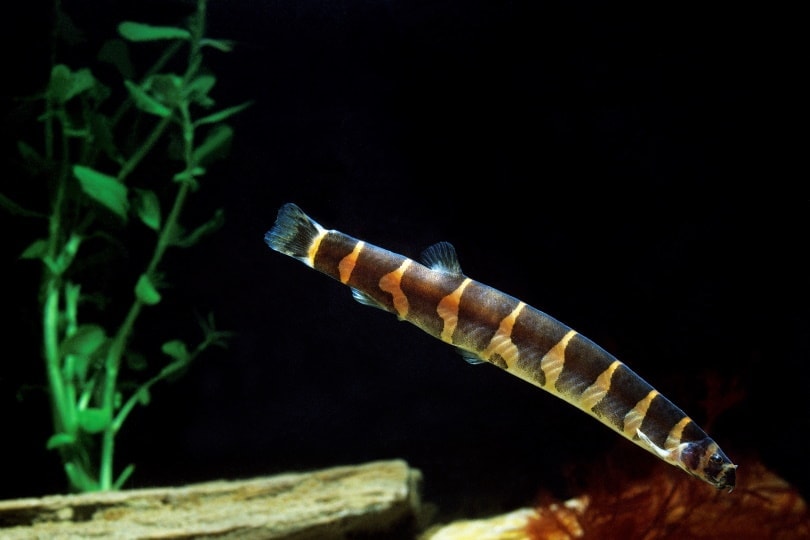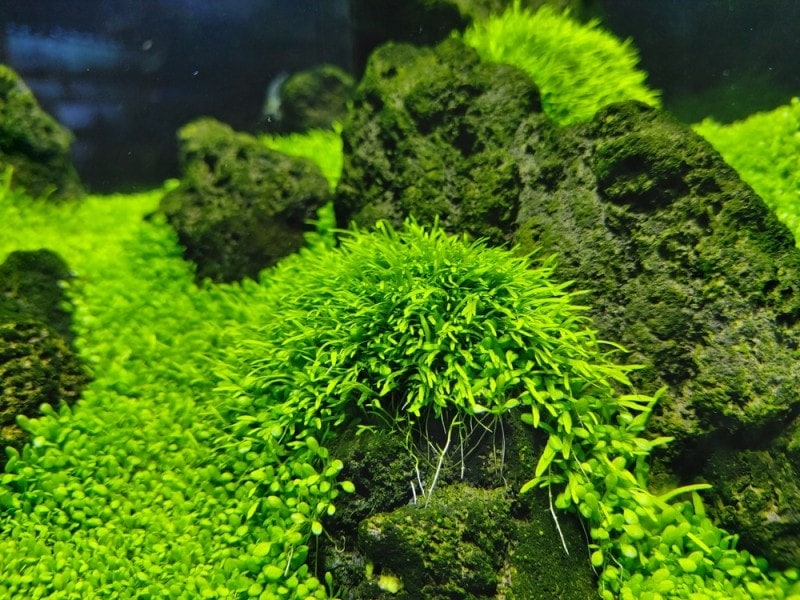How Many Kuhli Loaches Can You Have In a 20 Gallon Tank? Facts & FAQs

Updated on

Kuhli loaches are some pretty cool creatures no doubt, pun completely intended. These are some of the most interesting aquarium fish you could get, especially seeing as they look like a fish-eel hybrid. They are not overly hard to care for, but they do need the right size tank.
Lots of people wonder how many Kuhli loaches in a 20-gallon tank make for an ideal fit? The answer is 1-2, a Kuhli loach needs a minimum of 15-20 gallons of space, with each additional Kuhli loach requiring an extra 5 gallons of space. These fish can grow to 4 inches in length but are very peaceful.
How Many Gallons Does A Kuhli Loach Need?

A single Kuhli loach needs 15 gallons of space at the least, with 20 being the ideal and 25 being the best option.
For every additional Kuhli, you need to allow an additional 5 gallons of space.
Here are some examples with tank sizes;
- 10-gallon = 0, too small.
- 20-gallon = 1-2.
- 30-gallon = 3-4.
- 50-gallon = 5-7.
How Many Kuhli Loaches Should I Get?
Kuhli loaches are by no means schooling fish and they don’t swim around in groups like many other fish do. However, they also do not really like to be alone.
They seem to become much more active when they are kept with their own kind. Most experts would recommend keeping at least 4 or 5 of these creatures in the same tank which would mean a tank size of 30 gallons+.
Do Kuhli Loaches Need to be in Groups?
Kuhli loaches do not need to be kept in groups, as they are not schooling fish, but they definitely do better with some company.
It’s definitely not recommended to keep a single Kuhli loach in a tank.
Kuhli Loach Housing Requirements
Before you go off and start buying tanks and Kuhli loaches, there are some important housing requirements that you need to be aware of.
It’s nothing too intense, but you do need to follow these basic guidelines if you plan on your Kuhli loaches being happy and healthy.
Water Temperature

Kuhli loaches may not look like they prefer warm water, but they are actually tropical fish, and quite so.
These fish require the water temperature to be between 75 and 85 degrees Fahrenheit, which is fairly warm.
If you live somewhere in which the temperature often dips below 75 degrees, you will need an aquarium heater. Loaches do not do very well in cold water, so this needs to be avoided.
Water Hardness
Kuhli loaches require the water to be medium-soft in terms of hardness, which means that it should not contain many dissolved minerals.
A water hardness level around or under 10 KH is ideal for these fish. You may need to purchase a water conditioner to achieve this ideal level.
Water pH
Kuhli loaches need the water to be very slightly acidic or neutral. They require a water pH level between 6.0 and 7.0, with a solid 6.5 being the best.
This is just slightly acidic. These fish do not do well in alkaline water.

Filtration
Kuhli loaches do prefer their water to be fairly clean. In the wild, they live in slow-moving rivers. The current tends to help keep the water fairly pristine, so your aquarium needs to be clean as well.
If you have a 30-gallon loach tank, you should have a filter that can handle 2 to 4 times the water volume in the tank per hour, in order to ensure clean and healthy water.
You should also get a filter that engages in all three major forms of water filtration, including mechanical, biological, and chemical filtration.
Seeing as these fish like low flow rates, you should aim for a filter that has an adjustable output feature.
Keep in mind to use a fine mesh screen to cover the intake hose of the filter, or else Kuhli loaches may get sucked in.
Lighting
In terms of lighting, seeing as Kuhli loaches usually live in slow-moving rivers with lots of overhanging foliage. They are used to not getting all that much light.
Just a basic aquarium light to mimic natural daylight will do fine for these fish.
Substrate

Kuhli loaches are strict bottom dwellers and they love to burrow in the substrate during the day. For this reason, you should get fine, small, and smooth substrate.
The best way to go for these fish is about 1.5 inches of aquarium sand. That said, you may also choose to use aquarium gravel, but the grains need to be small, fine, and smooth.
You don’t want coarse gravel or else the Kuhli loaches will injure themselves when they burrow.
Plants
Kuhli loaches do also enjoy having some plants around, stuff they can swim through and hide under.
Any sort of rooted plant will do fine, although, beware that their burrowing may disturb plants, in which case you may want to consider some floating plants.
Rocks & Deco
Kuhli loaches do like to explore hidden areas and they like to get some privacy too.
Therefore, getting a few hollow rocks, hollow caves, little castles, or hollow driftwood is ideal, as it will provide the loaches with some privacy and adventure.
Tank Mates

As mentioned once before, the best tank mates for Kuhli loaches are more Kuhli loaches. With that being said, these fish are very peaceful and do fine with many tank mates.
Ideal tank mates include rasboras, tetra fish, danios, and any other such small fish which is relatively peaceful.
You need to avoid territorial and aggressive species, as Kuhli loaches are too peaceful to defend themselves.
A Lid
Finally, Kuhli loaches are known for jumping out of their tanks, which is why you definitely want to have a lid for them.
FAQ
Will Kuhli Loach jump out of the tank?
Yes, Kuhli loaches are known for jumping out of their tanks, and for this reason, you want to have a lid on your aquarium.
Do Kuhli loaches clean tanks?
Kuhli loaches may scavenge some food that they find. They will eat uneaten fish food, but they are not known for eating algae or plant detritus, so no, they don’t really clean tanks.
Can Kuhli loaches live with guppies?
Yes, both Kuhli loaches and guppies are peaceful fish that can easily live in the same fish tank.

Conclusion
At the end of the day, Kuhli loaches look neat, they are easy to care for, and quite peaceful too.
While they do need a good deal of tank space, as long as you provide them with enough room and good substrate to burrow in, they should be more than fine.
Featured Image Credit: Olga Chezhina, Shutterstock











